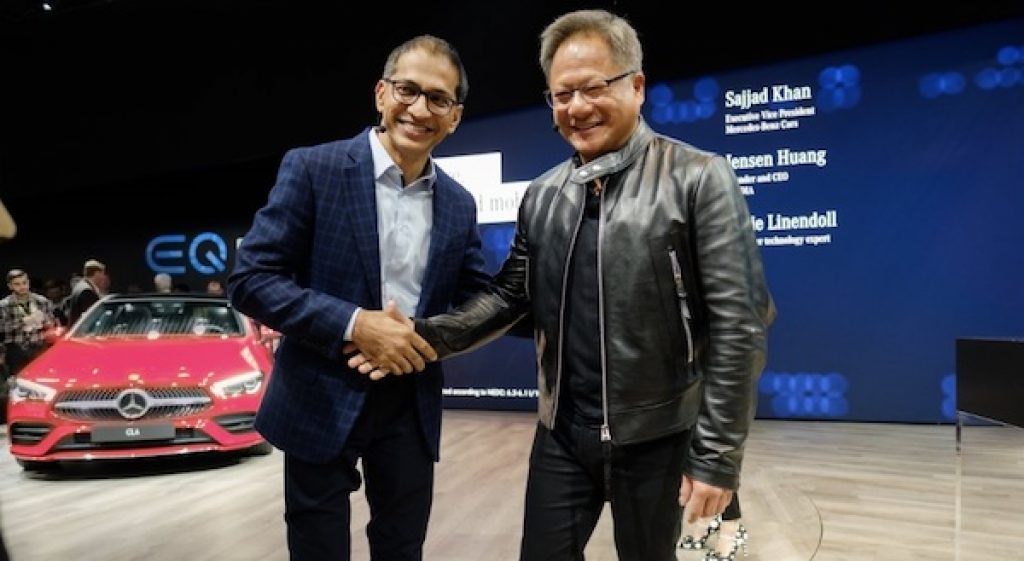NVIDIA’s Jensen Huang, Mercedes’ Sajjad Khan unveil vision for software-defined AI cars integrating self-driving, intelligent cockpits.
Mercedes-Benz announced today it has selected NVIDIA to help realize its vision for next-generation vehicles.
Speaking to a packed crowd at the Mercedes-Benz booth on the first day of CES 2019, Mercedes-Benz Executive Vice President Sajjad Khan and NVIDIA founder and CEO Jensen Huang outlined their plans for next-gen AI cars and the new breed of mobility solutions they’ll enable.
“We’re announcing a new partnership going forward, creating a computer that defines the future of autonomous vehicles, the future of AI and the future of mobility,” Huang said. He described a single system providing self-driving capabilities and smart-cockpit functions that replaces dozens of smaller processors inside current cars.
Both companies, he said, agree that the car of the future must be software defined — starting from creating the software for today’s requirements, anticipating software for tomorrow’s needs and building the computing architecture to enable it.
“This car computer is going to do things that no computer that exists today literally does,” Huang said.
Extending Ongoing Partnership
The partnership builds on a longstanding collaboration between the two companies.
At last year’s CES, Khan and Huang unveiled the cockpit of the future, Mercedes-Benz User Experience. MBUX infuses AI into everyday driving and is now in seven car models, with nine more being added this year. And in July, the companies, along with Bosch, announced a joint effort to operate a robotaxi service in San Jose, starting in this year’s second half.
This collaboration will now extend to the entire car, with NVIDIA DRIVE at the center of an entirely new vehicle architecture, adding high-performance, energy-efficient compute to handle AI software for advanced mobility technologies.
Khan said NVIDIA is the right partner to work with to overcome the massive challenges required to meet this aspiration.
“We need a partner we can rely on and work with, and I’m excited to say we’ve found that in NVIDIA,” he said. “This partnership has brought us farther ahead than we ever could have.”
Unified Architecture
Currently, the vehicle’s software functions are powered by dozens of electronic control units, known as ECUs, that are distributed throughout the car. Each is specialized — one unit controls windows and one the door locks, for example, and others control power steering and braking.
By combining the high-performance, energy-efficient compute of NVIDIA DRIVE AGX platforms with Mercedes’ century-plus of automotive engineering experience, next-gen vehicle architecture will be more capable and cost effective. Centralizing and unifying compute in the car will make it easier to integrate and update advanced software features as they become available, whether for self-driving or AI-powered user experiences.
“We are working on a total other different technology together with NVIDIA to use AI in our products to lead the way in today’s megatrends,” Khan said.
This supercomputer will enable Mercedes-Benz vehicles to run AI capabilities in the car and in the cockpit, from safe autonomous driving to innovative convenience features.


